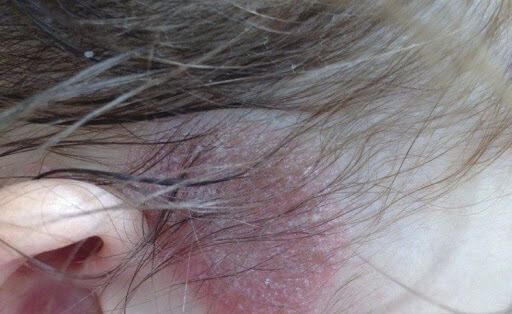At the moment, there are a huge number of drugs that are prescribed for systemic therapy of psoriasis and show their effectiveness. When choosing a drug for a patient with psoriasis, many parameters must be taken into account in order to maximize the individualization of the treatment approach. The safety profile of active substances is one of the most important criteria in the course of therapy, for the evaluation of which randomized controlled trials (RCTs) are mainly used. The article on estet-portal.com presents the results of a study that evaluated systemic drugs for articulation of psoriasis in terms of safety profile.
- Methods and objectives of the study of drug safety profile assessment in patients with psoriasis
- Characterization of complications associated with with systemic treatment of psoriasis
- Overview of the safety profile of medicinal products in the treatment of psoriasis
- Conclusion
Methods and objectives of the study for assessing the safety profile of drugs in patients with psoriasis
The data described were compared separately between specific treatment and methotrexate using Pearson's t-test or Student's t-test, depending on the distribution of variables. Methotrexate has been used as a comparator for the rest of the drugs because it represents the standard therapy and the largest group of classical treatments for psoriasis.
Read also: Modern methods of treating psoriasis.
The aims of the study were to:
1) describe the safety findings of systemic drugs and biologic/oral small molecules used to treat moderate to severe psoriasis;
2) compare the relative incidence of reported complications for each of the biologics and non-biologics using methotrexate as a reference;
3) make it easier for dermatologists to choose the most appropriate therapy for each patient.
The study included 2845 patients with 8954 treatment cycles, which at the time of analysis was 9642 patients per year.

Majority of the patients who received systemic treatment were men, with the exception of the ameprylast group.
Also, patients on ameprylast, acitretin, and etanercept were older than the control group on methotrexate. In contrast, patients taking cyclosporine or secukinumab, were significantly younger than the control group. Patients treated with infliximab, ustekinumab, and adalimumab started treatment with more severe psoriasis than patients treated with methotrexate. Almost all patients had plaque psoriasis (91%).
Characterization of complications associated with systemic treatment of psoriasis
The total number of complications in the series was 6,225, including 604 serious complications (19.7%), with a fatal outcome in 49 cases (0.78%). The most common complications are highlighted as follows (the most prominent complications in each group are listed in parentheses in order of frequency):
- infections and infestations (upper respiratory tract infections, gastroenteritis, urinary tract infections, bronchitis, herpes, herpes zoster, skin abscesses, otitis externa and fungal skin infections);
- laboratory abnormalities in the blood test (positive antinuclear antibodies, elevated transaminases, elevated triglycerides, positive tuberculin skin test, elevated cholesterol, elevated creatinine);
- gastrointestinal disorders (abdominal pain, diarrhea, nausea, vomiting, gastritis, rectal hemorrhage);
Read also: Psoriasis of the scalp.
- skin and subcutaneous disorders (paradoxical psoriasis-like rashes and exacerbation of psoriasis, urticaria, alopecia, pruritus, dermatitis, erythematosis, eczema, malignant neoplasms);
- diseases of the musculoskeletal system and connective tissue (arthralgia, musculoskeletal pain, including back pain, relapse of psoriatic arthritis, arthritis, tendonitis, myalgia);
- general and local disorders (asthenia, allergic reaction at the injection site, non-specific pain, chest pain, malaise, reactions associated with intravenous infusion);
- Disorders related to the central nervous system (headache and migraine, paresthesia, dizziness, carpal tunnel syndrome, stroke, sleep apnea syndrome)
- surgical and medical procedures (wart removal, cataract surgery, cholecystectomy, cryotherapy, tooth extraction, inguinal hernia surgery).
Among other complications, it is worth highlighting 36% of malignant neoplasms and 18% of serious adverse cardiovascular events, which were the most common cause of death.
All complications for each drug using methotrexate as reference were classified into five risk groups: reduced risk;
Overview of the safety profile of medicinal products in the treatment of psoriasis

1) ETANERCEPT had a lower risk than METHOTREXATE for gastrointestinal disorders (nausea, vomiting, abdominal pain/discomfort) and blood and lymphatic system disorders (anemia, macrocytosis, lymphopenia);
2) Infliximab had a higher risk than methotrexate for serious adverse events, malignancies of various origins, but lower for ear and labyrinth disorders (dizziness);
3) ADALIMUMAB had a lower risk of gastrointestinal disorders (like ETANERCEPT) and various vascular disorders;
4) Ustekinumab had a lower risk of all complications, namely gastrointestinal disorders (like ETANERCEPT or ADALIMUMAB), blood and lymphatic system disorders (like ETANERCEPT), and hepatobiliary disorders (hepatic steatosis);
Read also: Relationship between psoriasis and autoimmune diseases.
5) Acitretin had a lower risk of infectious disorders & invasions (upper respiratory infections, otitis externa, gastroenteritis, herpes zoster), gastrointestinal disorders (like ETANERCEPT, ADALIMUMAB or usteinumab);
6) Cyclosporine had a higher risk of various cardiovascular disorders, including hypertension, malignant neoplasms, renal and endocrine disorders (hirsutism);
7) Secukinumab had a lower risk of general disorders and injection site reactions (asthenia, malaise), gastrointestinal disorders (as ETANERCEPT), nervous system disorders (headache, migraine), benign, malignant, and unspecified neoplasms (especially melanoma), hepatobiliary disorders (hepatic steatosis).
8) Patients taking AMEPRILAST had a lower risk of infectious diseases and infestations, general disorders and injection site reactions.
Based on the results of the study, ustekinumab and secukinumab showed the best safety profile and ciclosporin followed by infliximab the worst safety profile.
At the same time, infliximab, cyclosporine, acitretin, AMEPRILAST and ADALIMUMAB have a higher risk of complications compared to methotrexate.
Conclusion
The limited number of randomized controlled trials makes it difficult for patients, clinicians, and guideline developers to choose between available products. From a clinical and practical point of view, this study may help guide therapeutic choice in patients with psoriasis through a detailed comparison of each drug's safety profile under real-world conditions, as well as the potential risk for various associated pathologies.







Add a comment